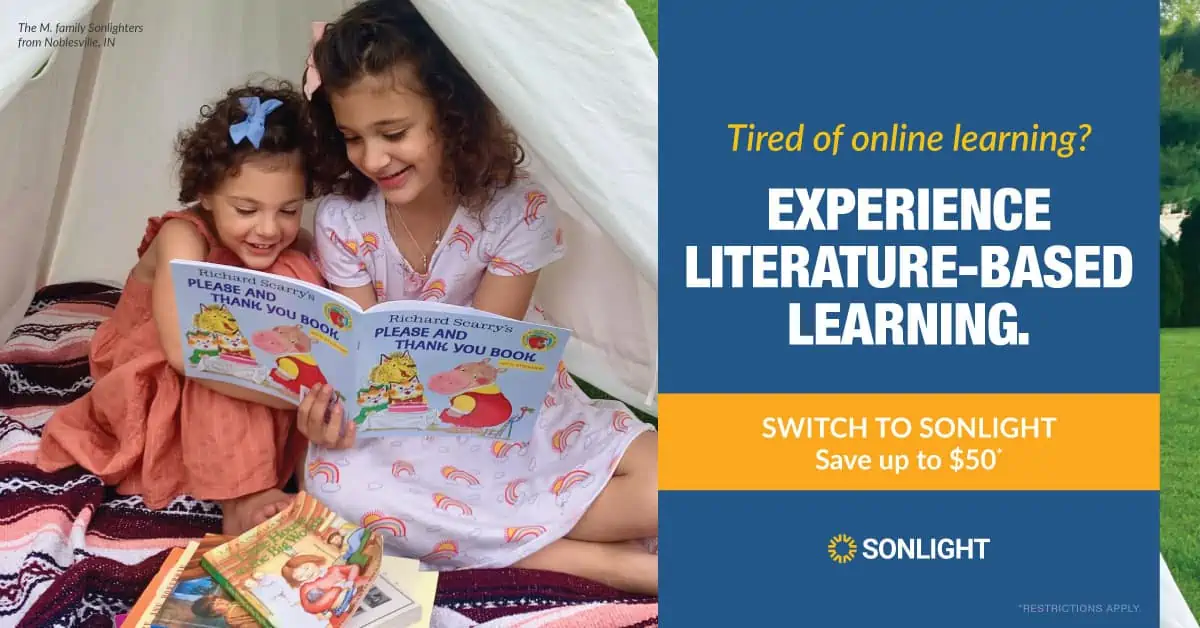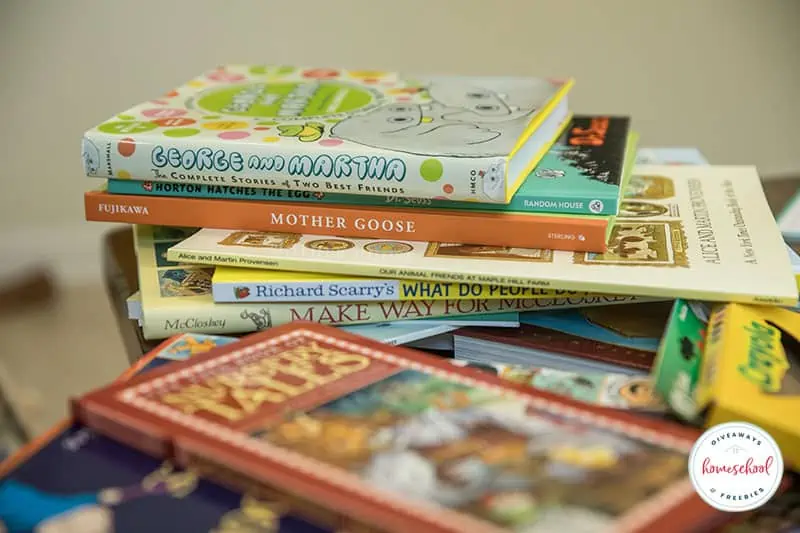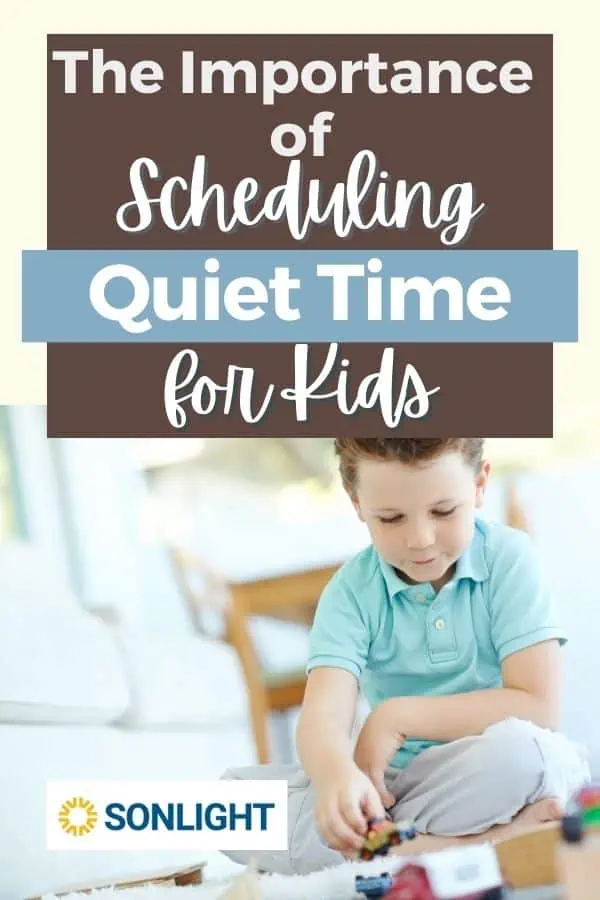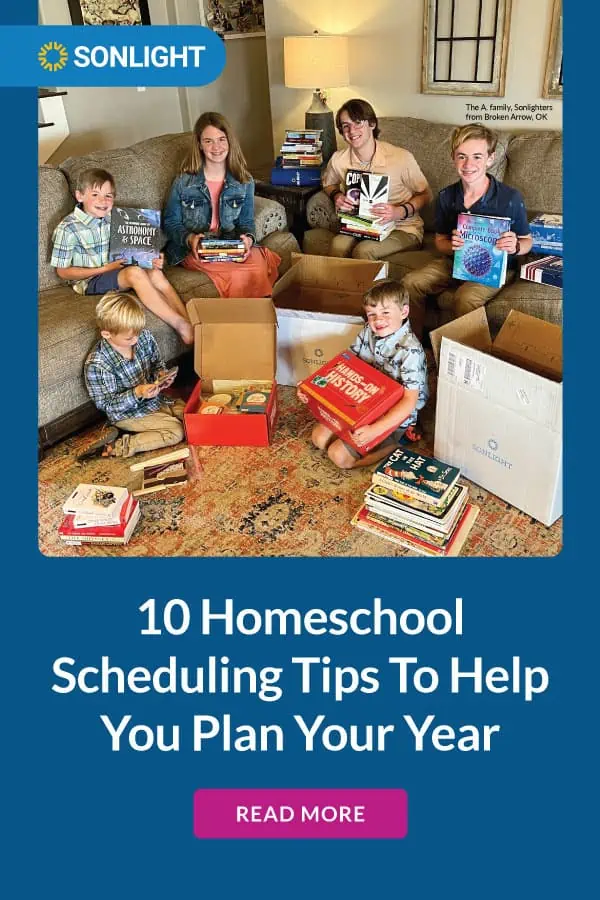The Best Ways To Teach Your Kids to Love Reading
Published:
June 9, 2022

Contributor:
Sonlight
Disclosure: This post may contain affiliate links, meaning if you decide to make a purchase via my links, I may earn a commission at no additional cost to you. See my disclosure for more info.
We all want kids who learn to love reading. For many of us, raising a lifelong reader is one of the ways we’ll judge the success of our homeschooling. While the results of your homeschool years are not in your hands, there are still many things you can do that will help engage your children with reading.
Learn to Love Reading
Learning to love reading can feel like an elusive goal for homeschool moms. What does it take for our kids to “catch” the bug? Is it possible to grow life-long readers even if they struggle learning to read?
How can I develop a love for reading?
You can develop a love for reading by modeling it in your homeschool and reading aloud to your children from a young age. Even though children’s books can be laborious after reading them a dozen times before bed, this natural family rhythm is important to setting up a successful reading experience with your children. You can even add some read aloud activities to further interest your kids.
Create Reading Routines
Even if you’re in a season of feeling overwhelmed with babies and toddlers in your home, you can still create pleasant rhythms and routines for reading with your children. Make it a regular part of your day, and you’ll be able to help your kids develop a love for reading.
Make Reading a Habit
And the best part of growing a reading habit in your children is that you’re setting them up for success as adults! Life-long learners know that they can always learn new things because they are readers. Our kids need to see this growth mindset in us as we encourage habits in them that will bloom into adulthood.
Even when your teen enters high school and then becomes a young adult, this love for reading can continue.
Learn to Love Reading
You might be wondering how do you spark the love of reading? You can spark a love of reading in your kids by starting now. The best time to start to grow a lifelong reader is when your children are still toddlers. But even if you missed the early years, it’s never too late!
Choosing the Right Books
Choosing the right books plays an important part in sparking this love of reading. Living books are important because they’re enjoyable to read and grab your imagination. But don’t neglect looking for books that fit your child’s interests! What is your child passionate about right now? Find books about that align with their interests and watch the love of reading grow!
Literature-Based Learning
Another great way to spark a love of reading is to connect different books they read in your homeschool with specific subject areas. In other words, use a literature-based homeschool program and your kids will be able to deep dive into their history and science topics from a variety of different angles through living books.
Sometimes growing a love of reading means allowing or encouraging your children to read books at a lower level than their capabilities would suggest. By giving them permission to read easier books, you’re giving them the opportunity to gain confidence, fluency, and enjoyment in the process.
What do you call a person who loves to read?
A person who loves to read is a bibliophile. You’ll know a book-lover when you see one. They take the habit of reading everywhere they go – to the waiting room, in the car, and everywhere in between.
A bibliophile’s favorite activity probably involves perusing book stores. They love their shelves full of books and have a hard time decluttering their personal library. For a bibliophile, free time is best spent with their nose in a good book.
What is the hobby of reading books called?
The hobby of reading books is called bibliophilia.
Someone that considers reading books as a hobby could also be referred to as a bookworm. This is not to be confused with bibliomania, which is a disorder that so values book collecting that one’s personal relationships suffer. No homeschool mom could be called a bibliomaniac, could they?!
Ways to Teach a Love of Reading to Your Kids
Gather a list of great books, living books, and non-twaddle, and then use some of these ideas to add to the reading fun in your homeschool!
Incorporate Audiobooks
Your struggling reader will appreciate a homeschool full of audiobooks. When kids have a hard time decoding the words, reading can be such a struggle that they lose the story. Even your better readers can enjoy putting the physical books aside for a bit and honing their listening skills. Audiobooks can be a lot of fun to listen to with multiple voices and characters and maybe even sound effects!
Be a Good Example of an Avid Reader
The homeschool parent can be a role model of an avid reader. Instead of jumping onto social media when you have some downtime in your day, grab your favorite books and show your kids that you never outgrow a reading lifestyle. Spend evenings or lazy afternoons reading as a family. This is a great way to teach your kids to love reading through example.
Create a Fun Reading Space
One of the keys in growing readers to to intentionally create a fun reading space. Whether your reading space is in the living room, outside, or tucked into a corner of your child’s bedroom, making comfortable reading spaces is important if you want kids to linger longer over a book.
Learn About the Authors
When your kids can learn more about the author, they’re more likely to enjoy reading. Who is listed as an author on your favorite book lists? See if you can find a biography or short video about their life and times. Then you’ll be able to appreciate their perspective, writing style, and growth as an author.
Watch Movies that are Made from Books
A good movie adaptation always starts with a good story. Of course, you should probably read the book first! But then, watch the related movie and discuss similarities and differences between the two. Your kids will likely have a strong opinion about which one they prefer and why. It’s a great discussion starter and makes a fun family movie night.
Strewing Books
When you make finding books easy for your kids, they’re more likely to pick up reading material and actually read it! So, start to strew books around the house. Whether you select a new book or a pile of great ones from the local library, make the best books readily available for your kids. Consider the topics and themes they’re into right now and find a great selection of books to scatter around for your kids to read. Of course, strewing books near your cozy reading spaces is a win-win.
Read Aloud as a Family
One of the great benefits of read-alouds is that it helps develop listening skills in your children. As you carve out a special time to read together, you’re also able to help grow your kids’ fluency and reading comprehension skills. Shared experiences as you dialogue together about a story are invaluable. By listening to the older children, your younger ones are growing too.
Another not-to-miss benefit of read aloud as a family is that even your struggling readers can learn to love books! Kids with dyslexia or other reading struggles shouldn’t miss out on the world of living books. So give them the chance to be lost in a story without having the challenge of reading the words themselves.
In addition to reading aloud as a family, consider encouraging your kids to find a reading buddy. This might be an older sibling with a younger sibling. Or this might include reading out loud to a beloved pet!
Discuss What You Read
It’s a wonderful thing when you can discuss what you read with your kids. Whether it’s during a family read-aloud or over dinner, talk about the characters, themes, and their impressions of the story. Some kids might love to join an in-person or online book club to further discuss their favorite books with friends.
Incorporate Fun Reading Activities
Extension activities are a great way to continue the learning experience from a read-aloud or deep dive into a related topic. Whether your book covered science subject matter or a specific period in history, your kids will love some extra hands-on activities after the last page of the book is read.
Consider these fun activities to extend the learning:
- make a diorama based on the story
- create a comic strip
- mark the places in the story on a map
- act out your favorite scene
- keep a reading journal with memorable quotes
Give Books as Gifts
Of course, the best way to share your love of books with others is to give books as gifts. Younger kids love classic picture books, or find fun books that go along with a friend’s hobbies. You could even gift your own books that you’ve read and loved in the past. Make it an annual tradition to have a book gift swap with homeschool friends each year to pass on your favorite children’s books and gather some new ones.
In Conclusion
As you can see, there are many ideas and tools for helping to grow a culture of reading in your homeschool. We hope you’ll see the benefit of starting early and continuing the reading journey throughout your child’s education.












